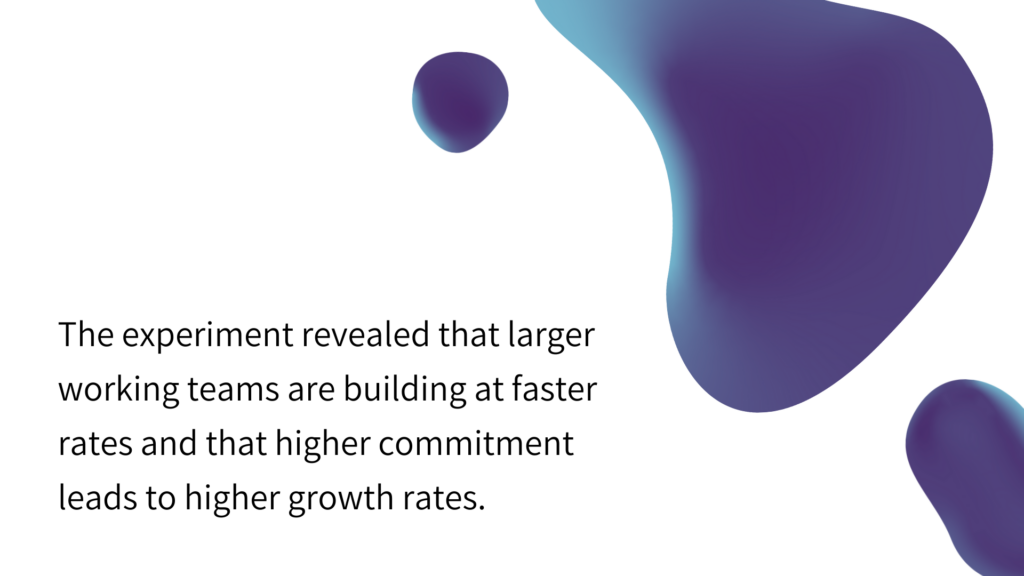Creativity is progressively acknowledged as the main driver for progress in all sectors of humankind’s activities: arts, science, technology, business, and social policies. Nowadays, many creative processes rely on many actors collectively contributing to an outcome. The same is true when groups of people collaborate in the solution of a complex problem. Despite the critical importance of collective actions in human endeavors, few works have tackled this topic extensively and quantitatively. Here we report about an experimental setting to single out some of the key determinants of efficient teams committed to an open-ended creative task. In this experiment, dynamically forming teams were challenged to create several artworks using LEGO bricks. The growth rate of the artworks, the dynamical network of social interactions, and the interaction patterns between the participants and the artworks were monitored in parallel. The experiment revealed that larger working teams are building at faster rates and that higher commitment leads to higher growth rates. Even more importantly, there exists an optimal number of weak ties in the social network of creators that maximizes the growth rate. Finally, the presence of influencers within the working team dramatically enhances the building efficiency. The generality of the approach makes it suitable for application in very different settings, both physical and online, whenever a creative collective outcome is required


